|
Almost every day I
receive questions from readers wanting information on the
subject of ammo reloading, such as bullet selection and powder
recommendations. I am always glad to help, but I also suggest
that everyone who loads their own ammunition should have at
least a couple of good loading manuals. There are several on the
market published by the major powder and bullet manufacturers.
All are helpful to a certain extent. I like to compare data from
at least two sources to help in choosing the correct powder and
load for a certain bullet. I will usually decide first upon the
bullet to be loaded, and then select the best two or three
powders to load behind the bullet, experimenting with accuracy
and velocity tests. Without the guidance of loading manuals, a
great amount of time and components would be wasted, still
resulting in perhaps a substandard load. I have been loading my
own ammo, and lots of it, for almost thirty years, and would not
be without at least a few good loading manuals.
One of the latest
and most comprehensive loading manuals available is put out by Barnes
Bullet Company. Like most manuals produced by bullet
manufacturers, the data is specific to Barnes’ own line of
bullets, but includes data using almost every available source
of powder, including Accurate, Winchester, IMR, Western, Somchem,
Hodgdon, Vihtavuori, Norma, and Alliant.
This is the most extensive variety of powder used by any bullet
company of which I am aware, and proves Barnes’ commitment to
providing the best and latest data that is applicable to the use
of their bullets.
This would be a
good place to interject that data for other bullets should not
be used for Barnes bullets. Barnes produces bullets that are
very unique in design, and possess traits that, while making
them superior to many bullets on the market, do require specific
load data to take full advantage of their unique ballistic
properties. Even within the Barnes family of bullets, load data
cannot be fully interchanged between the different designs of
specific bullets. For example, data for the coated and
non-coated bullets is not interchangeable, due to the excellent
lubricating properties of Barnes’ proprietary, baked-on bullet
coating. This bullet coating has made the Barnes XLC and VLC
some of my favorite bullets. They are capable of achieving
greater velocity than non-coated bullets, while exhibiting fine
accuracy, excellent terminal performance, and greatly reduced
fouling. This bullet coating is not to be confused with the
messy moly-coated bullets sold by others. The VLC is my first
choice in an accurate bullet for varmint hunting.
Barnes number three
manual contains the most extensive list of cartridges of any
loading manual that I have ever used. It contains data for many
old cartridges that are ignored by others. Barnes makes
bullets in nineteen different diameters, covering the needs of
just about any rifle cartridge, and several handgun rounds as
well. A few of the older cartridges included are: .250-3000
Savage, .300 H&H Magnum, 9.3x62mm, .450-400 x 3", .416
Rigby, and .470 Nitro Express, among many others. The load data
also includes many wildcat cartridges including the .22-250
Improved, .338 Scovill, .358 Shooting Times Alaskan, and several
others. Some of the newest cartridges on the market are also
included such as the .260 Remington, 6.5-284 Norma, .300 WSM,
.458 Lott, and .450 Marlin. Data is included for the line of
Remington Ultra Mag and Dakota cartridges as well. I have never
seen a loading manual that is as full of such a variety of data
as this one. There is loading data included for at least 89
cartridges (I might have missed a few), as well as data for
muzzle loading rifles using Barnes bullets.
In addition to the
very comprehensive and detailed loading data, the ballistics
charts included in each caliber-specific section, provide very
useful information regarding bullet drop, retained energy, wind
deflection and time-of-flight out to 600 yards for cartridges
ranging from the .22 Hornet up through the .50 BMG.
Also included
within the 786 page manual are instructions for loading ammo,
cleaning the bore, and properly breaking-in a rifle barrel.
There is a section describing the complete line of Barnes
bullets, another section with customer hunting photos, and one
with a brief description of company history and facilities. All
of the charts and graphics are clear and easy to understand.
The Barnes #3 manual is very interesting reading even
without the excellent data provided. There is a short
description and history given for each cartridge listed, written
by hunters and shooters who use that particular cartridge.
Barnes really put a
lot of effort into this new manual, and I congratulate them on a
job well done. This book is essential for anyone using Barnes
bullets, and if you are a serious rifle shooter or hunter, you
should be using Barnes bullets. Barnes makes bullets
suitable for taking any game on Earth, and for accurately
shooting targets at long range. Whether you prefer the Barnes
Original, Solid, X-Bullet, or VLC, this manual contains all the
information you need to achieve the best possible performance
from your gun and ammunition.
You can find this
new Barnes # 3 manual at any well-stocked shooting supply store,
or order it directly from Barnes website for only $25.99 at:
www.barnesbullets.com.
It contains a
wealth of information that would be virtually impossible for one
shooter to gain own his own during a lifetime of shooting. I
highly recommend it.
Jeff Quinn
  
Got something to say about this article? Want to agree (or
disagree) with it? Click the following link to go to the GUNBlast Feedback Page.
|
|
Click pictures for a larger version
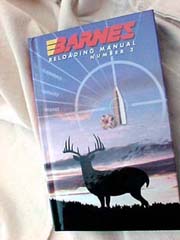

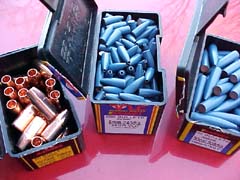
Barnes Bullets Reloading Manual #3 is a great source for
loading data using the excellent Barnes bullets in a
staggering variety of cartridges.


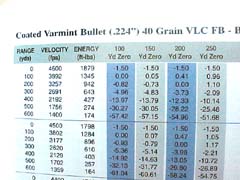
A wide variety of charts is included to aid the reloader
in calculating ballistics for virtually any bullet weight in
virtually any cartridge.
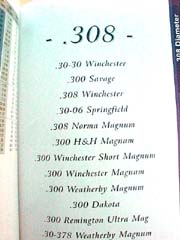
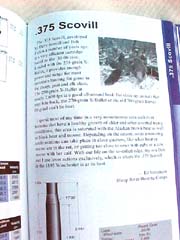

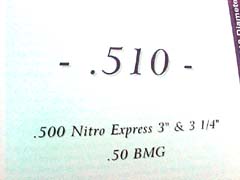
A small sampling of the data from Barnes' Reloading
Manual #3 gives a glimpse of the wealth of information
included. Author highly recommends both Barnes' bullets and
Barnes' Reloading Manual #3.
|
![]()